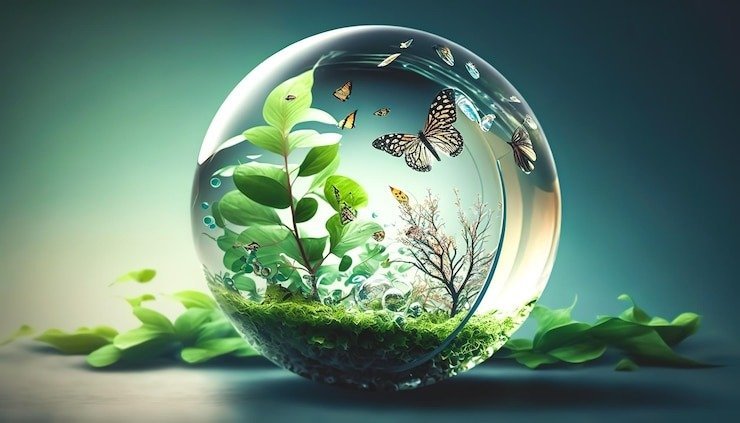Biodiversity, the variety of life on Earth, is not merely a scientific concept; it is the foundation of our ecosystems, economies, and cultural identities. In a world increasingly dominated by urbanization, industrialization, and climate change, understanding and promoting biodiversity is more crucial than ever. This blog post explores the significance of biodiversity, the threats it faces, and how it can unite individuals, communities, and nations in a collective effort to preserve our planet’s rich tapestry of life.
The Essence of Biodiversity
Biodiversity encompasses the diversity of species, ecosystems, and genetic variations within the natural world. This richness is vital for ecosystem stability, resilience, and productivity. Healthy ecosystems provide essential services—such as pollination, water purification, and nutrient cycling—that sustain human life. Furthermore, biodiversity enriches our cultural heritage, offering inspiration through art, literature, and traditional practices.
Threats to Biodiversity
Despite its undeniable importance, biodiversity is under severe threat. Habitat destruction, pollution, climate change, overexploitation of resources, and invasive species are just some of the factors contributing to the decline of species and ecosystems globally. According to experts, we are currently experiencing the sixth mass extinction, where species are disappearing at a rate unprecedented in human history.
As we grapple with these challenges, it is essential to recognize that the loss of biodiversity affects us all. It disrupts food systems, jeopardizes water security, and increases vulnerability to natural disasters. Furthermore, marginalized communities often bear the brunt of biodiversity loss, facing heightened risks to their livelihoods and cultural identities.
Why Biodiversity Matters to Us All
Better biodiversity matters because it intertwines with our lives in ways we often overlook. Here are several reasons why it is essential for a unified future:
1. Economic Benefits
Biodiversity is a driving force behind many industries, including agriculture, pharmaceuticals, and tourism. Diverse ecosystems support a wealth of resources that contribute to local and global economies. For instance, crop diversity enhances food security, while healthy forests attract eco-tourism, generating income for local communities. By investing in biodiversity, we invest in sustainable economic growth and resilience.
2. Ecological Stability
Healthy ecosystems are more resilient to environmental changes, including climate change. Biodiversity contributes to ecological stability, allowing ecosystems to adapt and maintain functionality in the face of disturbances. This resilience is crucial for safeguarding not only wildlife but also human communities that rely on these ecosystems for their survival.
3. Cultural Significance
Many cultures around the world are deeply connected to their local biodiversity. Traditional knowledge and practices are often rooted in an understanding of local ecosystems and species. Protecting biodiversity is essential for preserving cultural heritage, ensuring that future generations can continue to celebrate and learn from their natural surroundings.
4. Health and Well-being
The link between biodiversity and human health is increasingly recognized. Diverse ecosystems contribute to clean air and water, nutritious food, and natural medicines. Moreover, access to green spaces has been shown to improve mental health and well-being. By prioritizing biodiversity, we are investing in our own health and that of future generations.
“The loss of biodiversity is not just an environmental issue; it is a human issue that affects our livelihoods, our health, and our very existence.”
Uniting for Biodiversity
To combat the threats to biodiversity, it is essential that we unite as individuals, communities, and nations. Here are some strategies to foster collaboration and promote better biodiversity:
1. Education and Awareness
Raising awareness about the importance of biodiversity is the first step toward action. Educational programs, community workshops, and social media campaigns can help individuals understand how their actions impact the environment. By fostering a culture of appreciation for biodiversity, we can inspire collective action.
2. Community Engagement
Local communities play a pivotal role in biodiversity conservation. Community-led initiatives, such as habitat restoration projects, conservation areas, and sustainable agriculture practices, can significantly impact local ecosystems. Engaging communities in decision-making processes ensures that conservation efforts are culturally relevant and effective.
3. Policy Advocacy
Advocating for strong environmental policies at local, national, and international levels is vital for biodiversity protection. Governments must commit to sustainable development practices, enforce regulations against pollution and habitat destruction, and support conservation efforts. Additionally, international agreements, such as the Convention on Biological Diversity, provide frameworks for global cooperation in biodiversity conservation.
4. Sustainable Practices
Adopting sustainable practices in our daily lives can have a ripple effect on biodiversity conservation. Whether it’s reducing waste, using resources responsibly, supporting local and organic products, or participating in reforestation efforts, every action counts. Encouraging businesses to adopt sustainable practices can also drive significant change in the marketplace.
In adition
Better biodiversity matters because it is a shared responsibility that unites us all. The protection of our planet’s biological richness is not just an environmental concern; it is a human imperative. By recognizing the intrinsic value of biodiversity, we can foster a sense of stewardship that transcends borders, cultures, and generations. Together, we can create a sustainable future where biodiversity thrives, enriching our lives and the world around us.
